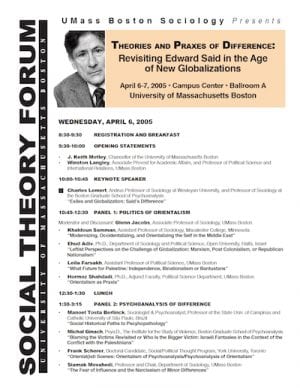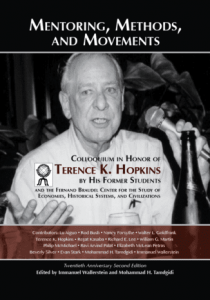Proceedings Journal Article — What Future for Palestine: Independence or Bantustans — by Leila Farsakh
$15.00
The aim of this paper is to explain how the two-state solution to the Israeli-Palestinian conflict is dead, despite all the international support that this idea has obtained over the past four years. I explain how a process of bantustanisation has taken place, and how the Palestinian territories in the West Bank and Gaza Strip have become analogous to the South African Bantustans during the apartheid era, despite the historical differences between the Israeli-Palestinian and the South African conflicts.
Description
Abstract
Palestine was central to Said’s life and work. In many ways, it was central to his work on Orientalism, among other works. His relation to Palestine, the way he saw the conflict and sought to articulate it to a western, often orientalist, audience, the way he campaigned for a just solution to the Israeli-Palestinian conflict and tried to get an effective political solution to it echoed much of his struggle in researching, explaining and fighting Orientalism. The aim of this paper is to explain how the two-state solution to the Israeli-Palestinian conflict is dead, despite all the international support that this idea has obtained over the past four years. I explain how a process of bantustanisation has taken place, and how the Palestinian territories in the West Bank and Gaza Strip have become analogous to the South African Bantustans during the apartheid era, despite the historical differences between the Israeli-Palestinian and the South African conflicts.
By Bantustanisation is meant the process by which Palestinian territories have been transformed into de facto population reserves out of which Palestinians cannot exit without the possession of a permit issued by Israeli military authorities. These “reserves” have remained dependent on the Israeli economy, but at the same time have been unable to gain access to it, nor capable of evolving into a sovereign independent entity. Whether by default or design, the Israeli response to the Al-Aqsa Intifada and the Road Map have simply consolidated this process. If the prospect for a two-state solution is buried by default, if not by design, the only prospects that remain are either a continuous war or a new form of state, be it bi-national, multi-national or secular state. The former is not a viable alternative, and the latter is not yet as well defined, let alone accepted. In both cases, though, there is a need for the Palestinians, and their supports abroad, to rethink the nature of their political vision, resistance and mobilization, albeit by drawing, or not, on the South African resistance movement.
Recommended Citation
Farsakh, Leila. 2005. “What Future for Palestine: Independence or Bantustans.” Pp. 47-60 in Theories and Praxes of Difference: Revisiting Edward Said in the Age of New Globalizations: Proceedings of the Second Annual Social Theory Forum, April 6-7, 2005 (Discourse of Sociological Practice, Vol. 7, Issues 1&2, Fall/Spring 2005). Double-Issue Guest Editor: Mohammad H. Tamdgidi. Sociology Department, UMass Boston.
Read the Above Publication Online
To read the above publication online, you need to be logged in as an OKCIR Library member with a valid access. In that case just click on the large PDF icon below to access the publication. Make sure you refresh your browser page after logging in.






